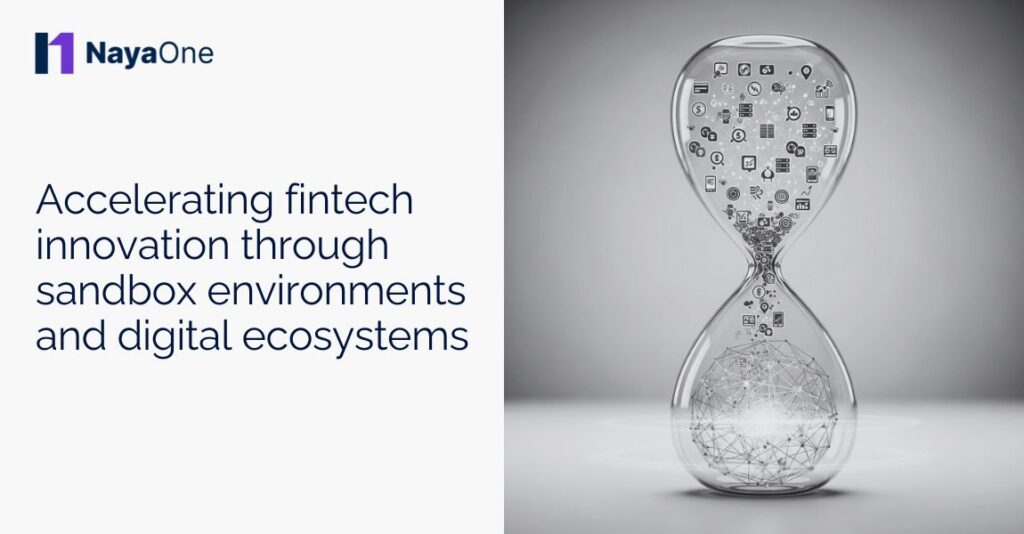Financial services are evolving quickly, and everyone is looking for ways to do more with less risk. That is where sandbox environments and digital ecosystems come into play.
These tools are not just buzzwords; they are practical ways for banks, fintechs, and other players to experiment, collaborate, and bring new ideas to life. By providing a safe space for trial and error, sandboxes allow teams to explore creative solutions and drive fintech innovation without jeopardising operations or customer trust.
Meanwhile, digital ecosystems act as a bridge, connecting innovators with the wider financial community and enabling ideas to spread faster. The UK’s fintech adoption rate stands at 71%, reflecting widespread awareness and a large customer base.
Let’s explore how using sandboxes and ecosystems can accelerate development and adoption, and why institutions that embrace them are set to gain a competitive edge.
Why are sandbox environments vital for innovation?
A sandbox environment is a controlled setting where new financial products or technologies can be tested without impacting real customers or live systems. Imagine it as a playground where fintechs can try out bold ideas safely. This kind of environment allows developers to push boundaries, experiment with new features, and explore potential use cases without worrying about breaking anything in the real world. Sandbox environments are central to fintech innovation, providing a space where ideas can be tested, refined, and validated before reaching customers.
Sandbox environments give institutions the freedom to experiment with new features, test compliance measures, and explore user experiences. For example, a bank might test a digital wallet with virtual funds before rolling it out to customers. This reduces the chance of costly errors and regulatory issues while allowing teams to learn and iterate quickly.
Another benefit is that sandboxes shorten the time it takes to move from concept to launch. By removing real-world constraints temporarily, innovators can test multiple variations, see what works, and adjust. The result is faster development cycles, smarter solutions, and a safer path to adoption. Over time, this leads to a culture of experimentation where teams are encouraged to explore new approaches and innovate with confidence.
How do digital ecosystems create a bridge between fintechs and financial institutions?
While sandboxes are about experimentation, digital ecosystems are about connection. A digital ecosystem is a network where banks, fintechs, service providers, and even regulators can interact seamlessly. These ecosystems make collaboration easier, accelerate integration, and give every participant access to new tools and insights. Digital ecosystems play a key role in driving fintech innovation, enabling ideas to move from concept to real-world adoption more efficiently.
Through these ecosystems, fintechs can plug their solutions into a bank’s existing systems without building everything from scratch. Financial institutions benefit from fresh ideas and technology that would take years to develop internally. Everyone wins because ecosystems allow for shared resources, standardised processes, and clear communication.
Moreover, digital ecosystems can scale innovation. Once a solution is proven in a sandbox, it can be distributed and adopted across the ecosystem, reaching more customers faster. This makes it possible to test ideas locally and then expand without disrupting operations. Ecosystems also provide a platform for ongoing feedback, helping teams to improve solutions continuously and stay aligned with customer expectations.
What role does collaboration play in speeding up adoption?
Innovation rarely happens in isolation. Sandboxes and ecosystems are only effective when collaboration is at the centre. Successful projects often rely on input from multiple teams, including developers, compliance officers, business units, and even external partners. Bringing these perspectives together ensures that solutions are robust, compliant, and ready for real-world use. Collaboration is a key driver of fintech innovation, allowing new ideas to be tested, refined, and adopted more quickly.
Consider a fintech developing a payment solution. Working inside a sandbox with input from a bank’s risk and compliance teams ensures the product meets regulations before it hits real customers. Collaboration reduces friction and speeds up adoption because everyone understands the solution and trusts it.
Case studies show that organisations that embrace collaboration often see better results. Partnering with fintechs and leveraging ecosystem connections can accelerate testing, approval, and launch. It also encourages knowledge sharing, so teams learn from each experiments rather than repeating mistakes. Over time, this approach fosters stronger relationships between banks and fintechs, laying the groundwork for continuous innovation.
How can financial institutions future-proof with innovation?
Using sandbox environments and digital ecosystems is not just about solving today’s challenges. It is also about preparing for the next wave of financial services. Open banking, embedded finance, and sustainable finance are just a few trends shaping the sector. Institutions that invest in these tools can experiment with new models and adapt quickly as the market changes. These approaches help drive fintech innovation, ensuring new solutions can be tested and refined before reaching customers.
By testing innovations in a sandbox first, organisations reduce risk and build confidence. Digital ecosystems allow successful solutions to spread faster, enabling banks and fintechs to offer competitive services without long delays. In effect, these tools make institutions more agile, resilient, and ready to meet future customer expectations.
Innovation does not stop at technology. It is about creating a culture that encourages curiosity, rapid iteration, and smart risk-taking. Sandboxes and ecosystems make that culture tangible, turning ideas into solutions that deliver real value. Financial institutions that embrace these approaches are better placed to respond to regulatory changes, shifting customer needs, and market disruption.
Is it time for financial institutions to embrace sandboxes and ecosystems?
The answer is yes. Sandbox environments provide a safe place to experiment, while digital ecosystems connect innovators with the wider financial community. Together, they accelerate development, reduce risk, and help institutions stay ahead of the curve.
Embracing these tools is no longer optional. Institutions that explore, test, and scale solutions quickly will offer better customer experiences, adapt to market changes, and unlock opportunities that others might miss. In short, sandboxes and ecosystems are not just about technology; they are about smarter ways to innovate and grow.
The future of financial ecosystems is collaborative, experimental, and agile. Those who leverage sandbox environments and digital ecosystems will lead the charge, creating solutions that meet customer needs faster and more effectively. By adopting these approaches today, organisations can ensure they are ready for whatever comes next in the world of financial services.





